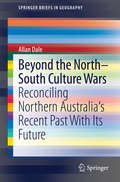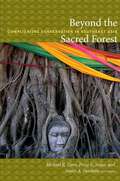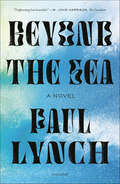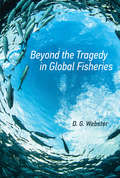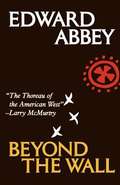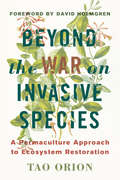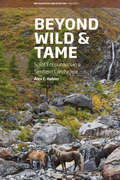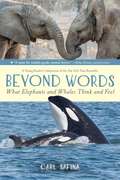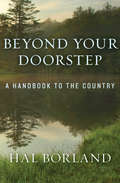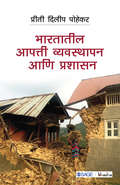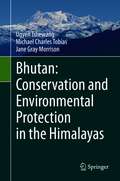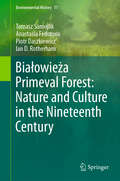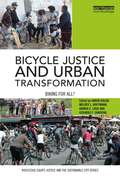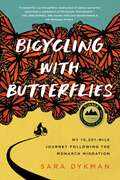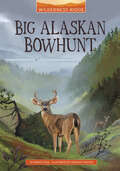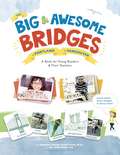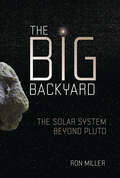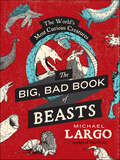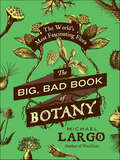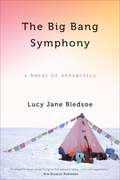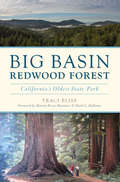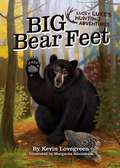- Table View
- List View
Beyond the North-South Culture Wars: Reconciling Northern Australia's Recent Past With Its Future (SpringerBriefs in Geography)
by Allan DaleIncreasingly, Australia's agriculturalists are looking to the nation's north to escape the decline in southern Australia's water and soil resources. Booming mineral and gas development is also helping to drive the nation's economic success. At the same time, the south's conservation sector would like to see much of the north preserved as iconic wilderness. Both conservation and resource development interests alike are often at odds with the interests of the north's traditional owners, many of whom remain trapped in welfare dependency and poverty. Indeed, to the ire of north Australians, the past five decades of north Australian history have indeed been characterized by these national-scale conflicts being played out in regional and local communities. This book explores these conflicts as well as the many emerging opportunities facing the development of the north, suggesting that a strong cultural divide between northern and southern Australia exists; one that needs to be reconciled if the nation as a whole is to benefit from northern development. The author first explores where these historical conflicts could take us without a clear forward agenda. A story-based personal narrative from his long and diverse experience in the north gives life to these themes. Finally, the book then draws on these stories to help shape a cohesive agenda for the north's future.
Beyond the Sacred Forest: Complicating Conservation in Southeast Asia
by Michael R. Dove Percy E. Sajise Amity A. DoolittleReflecting new thinking about conservation in Southeast Asia, Beyond the Sacred Forest is the product of a unique, decade-long, interdisciplinary collaboration involving research in Indonesia, Malaysia, and the Philippines. Scholars from these countries and the United States rethink the translation of environmental concepts between East and West, particularly ideas of nature and culture; the meaning of conservation; and the ways that conservation policy is applied and transformed in the everyday landscapes of Southeast Asia. The contributors focus more on folk, community, and vernacular conservation discourses than on those of formal institutions and the state. They reject the notion that conservation only takes place in bounded, static, otherworldly spaces such as protected areas or sacred forests. Thick with ethnographic detail, their essays move beyond the forest to agriculture and other land uses, leave behind orthodox notions of the sacred, discard outdated ideas of environmental harmony and stasis, and reject views of the environment that seek to avoid or escape politics. Natural-resource managers and policymakers who work with this more complicated vision of nature and culture are likely to enjoy more enduring success than those who simply seek to remove the influence and impact of humans from conserved landscapes. As many of the essays suggest, this requires the ability to manage contradictions, to relinquish orthodox ideas of what conservation looks like, and to practice continuously adaptive management techniques. Contributors. Upik Djalins, Amity A. Doolittle, Michael R. Dove, Levita Duhaylungsod, Emily E. Harwell, Jeyamalar Kathirithamby-Wells, Lye Tuck-Po, Percy E. Sajise, Endah Sulistyawati, Yunita T. Winarto
Beyond the Sea: A Novel
by Paul LynchA novel from the 2023 Booker Prize winning author of Prophet Song"Beyond the Sea is frightening but beautiful." --M John Harrison, The GuardianThe haunting story of two men stranded at sea pushing against their physical and mental limits to stay aliveBased partly on true events, Paul Lynch’s haunting and sublime novel Beyond the Sea tells the story of two South American fishermen, Bolivar and Hector, who go to sea before a catastrophic storm. Needing cash, Bolivar convinces his boss to let him fish despite the weather. His fishing partner is nowhere to be found, so he brings Hector, a sullen and inexperienced teenager. The storm arrives, and though the two men survive, they’ve been blown hundreds of miles out in the Pacific Ocean with little hope for rescue. Coming to terms with their new reality, they are forced to accept their separation from the modern world, their sudden and inescapable intimacy, and the possibilities and limits of faith, hope, and survival. As the days go by, they grapple with the mistakes of their pasts, the severity of their present, and the uncertainty of their future. And though Bolivar and Hector fight to maintain their will to live, nothing in the barren seascape or in their minds promises that they will make it. Ambitious and profoundly moving, Beyond the Sea explores what it means to be a man, a friend, and a sinner in a fallen world. With evocative prose, Lynch crafts a suspenseful drama that refuses sentimentality or easy answers. Instead, Beyond the Sea is a hard-won and intimate rendering of the extremities of human life, both physical and mental.
Beyond the Tragedy in Global Fisheries (Politics, Science, and the Environment)
by D. G. WebsterAn analysis of how responsive governance has shaped the evolution of global fisheries in cyclical patterns of depletion and rebuilding dubbed the “management treadmill.”The oceans are heavily overfished, and the greatest challenges to effective fisheries management are not technical but political and economic. In this book, D. G. Webster describes how the political economy of fisheries has evolved and highlights patterns that are linked to sustainable transitions in specific fisheries. Grounded in the concept of responsive governance, Webster's interdisciplinary analysis goes beyond the conventional view of the "tragedy of the commons.” Using her Action Cycle/Structural Context framework, she maps long-running patterns that cycle between depletion and rebuilding in a process that she terms the management treadmill.Webster documents the management treadmill in settings that range from small coastal fishing communities to international fisheries that span entire oceans. She identifies the profit disconnect, in which economic incentives are out of sync with sustainable use, and the power disconnect, in which those who experience the costs of overexploitation are politically marginalized. She examines how these disconnects shaped the economics of expansion and documents how political systems failed to prevent related cycles of serial resource depletion. Webster also traces the increasing use of restrictive management in response to worsening fisheries crises and the emergence of new, noncommercial interests that demand greater management but also generate substantial conflict. She finds that the management treadmill is speeding up with population growth and economic development, and so concludes that sustainable fisheries can only exist within a sustainable global economic system.
Beyond the Wall: Essays from the Outside
by Edward AbbeyIn this wise and lyrical book about landscapes of the desert and the mind, Edward Abbey guides us beyond the wall of the city and asphalt belting of superhighways to special pockets of wilderness that stretch from the interior of Alaska to the dry lands of Mexico.
Beyond the War on Invasive Species
by David Holmgren Tao OrionInvasive species are everywhere, from forests and prairies to mountaintops and river mouths. Their rampant nature and sheer numbers appear to overtake fragile native species and forever change the ecosystems that they depend on. Concerns that invasive species represent significant threats to global biodiversity and ecological integrity permeate conversations from schoolrooms to board rooms, and concerned citizens grapple with how to rapidly and efficiently manage their populations. These worries have culminated in an ongoing "war on invasive species," where the arsenal is stocked with bulldozers, chainsaws, and herbicides put to the task of their immediate eradication. In Hawaii, mangrove trees (Avicennia spp.) are sprayed with glyphosate and left to decompose on the sandy shorelines where they grow, and in Washington, helicopters apply the herbicide Imazapyr to smooth cordgrass (Spartina alterniflora) growing in estuaries. The "war on invasive species" is in full swing, but given the scope of such potentially dangerous and ecologically degrading eradication practices, it is necessary to question the very nature of the battle. Beyond the War on Invasive Species offers a much-needed alternative perspective on invasive species and the best practices for their management based on a holistic, permaculture-inspired framework. Utilizing the latest research and thinking on the changing nature of ecological systems, Beyond the War on Invasive Species closely examines the factors that are largely missing from the common conceptions of invasive species, including how the colliding effects of climate change, habitat destruction, and changes in land use and management contribute to their proliferation. Beyond the War on Invasive Species demonstrates that there is more to the story of invasive species than is commonly conceived, and offers ways of understanding their presence and ecosystem effects in order to make more ecologically responsible choices in land restoration and biodiversity conservation that address the root of the invasion phenomenon. The choices we make on a daily basis--the ways we procure food, shelter, water, medicine, and transportation--are the major drivers of contemporary changes in ecosystem structure and function; therefore, deep and long-lasting ecological restoration outcomes will come not just from eliminating invasive species, but through conscientious redesign of these production systems.
Beyond Wild and Tame: Soiot Encounters in a Sentient Landscape (Interspecies Encounters #2)
by Alex OehlerResponding to recent scholarship, this book examines animal domestication and offers a Soiot approach to animals and landscapes, which transcends the wild-tame dichotomy. Following herder-hunters of the Eastern Saian Mountains in southern Siberia, the author examines how Soiot and Tofa households embrace unpredictability, recognize sentience, and encourage autonomy in all their relations with animals, spirits, and land features. It is an ethnography intended to help us reinvent our relations with the earth in unpredictable times.
Beyond Words: What Animals Think And Feel (Beyond Words #1)
by Carl SafinaA young reader’s adaptation of The New York Times bestsellerFollow researcher Carl Safina as he treks with a herd of elephants across the Kenyan landscape, then travel with him to the Pacific Northwest to track and monitor whales in their ocean home. Along the way, find out more about the interior lives of these giants of land and sea—how they play, how they fight, and how they communicate with one another, and sometimes with us, too.Weaving decades of field research with exciting new discoveries about the brain and featuring astonishing photographs taken by the author, Beyond Words: What Elephants and Whales Think and Feel gives readers an intimate and extraordinary look at what makes these animals different from us, but more important, what makes us all similar.
Beyond Your Doorstep: A Handbook to the Country
by Hal BorlandThe inspiring classic on the virtues of embracing the great outdoors from the national bestselling author of The Dog Who Came to Stay. Over the course of his career, Hal Borland wrote eight nature books and hundreds of &“outdoor editorials&” for the Sunday New York Times, extolling the virtues of the countryside. From his home on one hundred acres in rural Connecticut, Borland wrote of the natural wonders, both big and small, that surrounded him every day. Beyond Your Doorstep is his guide to venturing into the outdoors around your home, wherever it is, and discovering the countryside within reach. The beauty to be found in roadsides, meadows, woodlands, and bogs are explored in elegant prose. Borland takes up birds, animals, and plants—both edible and poisonous—and the miraculous ways in which they are threaded together throughout the natural world. Part introductory field guide and part incitement to exploration, Beyond Your Doorstep is a classic of nature writing and a must-read for anyone looking to renew his or her relationship to the outdoors.
Bharatatil Aapatti Vyavasthapan va Prashasan
by Priti Diliprao PohekarDisaster Management is a critical and integral part of any government’s planning strategy. Indian government has been struggling with it since long. This book discusses the varied threats, risks that the country faces. It talks about the Acts implemented, their advantages/disadvantages and their validity. It also talks about the different stakeholders involved, role players and decision makers in the country. It compare country’s disaster management with international decisive moments and acts and the UN’s ordinance.
Bhutan: Conservation and Environmental Protection in the Himalayas
by Ugyen Tshewang Michael Charles Tobias Jane Gray MorrisonLocated in the heart of the Eastern Himalayas, Bhutan practices the philosophy of Gross National Happiness (“GNH”) that embraces environmental conservation as one of the main building blocks for its sustainable development goals. Bhutan’s conservation strategies and success are largely driven by the strong political will and visionary leadership of His Majesty the King of Bhutan The nation’s Buddhist perspectives regarding a deep and abiding respect for nature; and the strategic enforcement of a wide-ranging stringent set of internal regulations and controls have helped ensure ecological gold standards in Bhutan. Moreover, the country is an active member of the international conservation community by fulfilling its implementation of various Multilateral Environment Agreements. While it emerged into the 21st century as one of the 36 global terrestrial “hotspots” in biological diversity conservation ranks, Bhutan’s sheer commitment with more than 51% of its territory being managed under the explicit status of a protected area network, and more than 70% of the land under forest cover, represents Bhutan’s exemplary dedication to protect the planet despite its smallness in size and economy, and the biological fragility exemplified by its hotspot situation. In the face of imminent severe threats of global warming, Bhutan nonetheless exemplifies the truth that “a small country with a big conservation commitment” can make an enormous contribution to the global community.At the regional level, Bhutan is intent upon protecting the Water Towers of Asia (that glacial expanse of the Himalayas) which is a critical resource bulwark for about one-fifth of the global population downstream in South Asia. Such protections invariably help mitigate climate change by acting as a nation-wide carbon sink through its carbon neutral policies. In short, Bhutan has long represented one of the world’s foremost national guardians of biodiversity conservation, ecological good governance, and societal sustainability at a period when the world has entered the Anthropocene – an epoch of mass extinctions.We envision this publication to be ecologically and ethically provocative and revealing for the concerned scientific communities, and governments. Through an extensive review of the scientific and anthropological literature, as well as the research team's own data, the Author's have set forth timely recommendations for conservation policies, strategies and actions. This book provides technical and deeply considered assessments of the state of Bhutan’s environment, its multiple, human-induced stressors and pressures; as well as extremely sound, practical techniques that would address conservation strategies in the Himalayas and, by implication, worldwide.
Białowieża Primeval Forest: Nature and Culture in the Nineteenth Century (Environmental History #11)
by Tomasz Samojlik Ian D. Rotherham Anastasia Fedotova Piotr DaszkiewiczUnderstanding the current state and dynamics of any forest is extremely difficult - if not impossible - without recognizing its history. Białowieża Primeval Forest (BPF), located on the border between Poland and Belarus, is one of the best preserved European lowland forests and a subject of myriads of works focusing on countless aspects of its biology, ecology, management. BPF was protected for centuries (15th-18th century) as a game reserve of Polish kings and Lithuanian grand dukes. Being, at that time, a part of the Grand Duchy of Lithuania, BPF was subject to long-lasting traditional, multi-functional utilisation characteristic for this part of Europe, including haymaking on forest meadows, traditional bee-keeping and fishing in rivers flowing through forest. This traditional model of management came to an abrupt end due to political change in 1795, when Poland and Grand Duchy of Lithuania ceased to exist in effect of partitioning by neighbouring countries, and the territory of BPF was taken over by the Russian Empire. The new Russian administration, influenced by the German trends in forestry, attempted at introducing the new, science-based forestry model in the BPF throughout the 19th century. The entire 19th century in the history of BPF is a story of struggle between new trends and concepts brought and implemented by new rulers of the land, and the traditional perception of the forest and forest uses, culturally rooted in this area and originating from mediaeval (or older) practices.The book will show the historical background and the outcome of this struggle: the forest’s history in the long 19th century focusing on tracking all cultural imprints, both material (artificial landscapes, introduced alien species, human-induced processes) and immaterial (traditional knowledge of forest and use of forest resources, the political and cultural significance of the forest) that shaped the forest’s current state and picture. Our book will deliver a picture of a crucial moment in forest history, relevant not only to the Central Europe, but to the continent in general. Moment of transition between a royal hunting ground, traditional type of use widespread throughout Europe, to a modern, managed forest. Looking at main obstacles in the management shift, the essential difference in perceptions of the forest and goods it provides in both modes of management, and the implications of the management change for the state of BPF in the long 19th century could help in better understanding the changes that European forests underwent in general.
Bicycle Justice and Urban Transformation: Biking for all? (Routledge Equity, Justice and the Sustainable City series)
by Aaron Golub Melody L. Hoffmann Adonia E. Lugo Gerardo F. SandovalAs bicycle commuting grows in the United States, the profile of the white, middle-class cyclist has emerged. This stereotype evolves just as investments in cycling play an increasingly important role in neighborhood transformations. However, despite stereotypes, the cycling public is actually quite diverse, with the greatest share falling into the lowest income categories. Bicycle Justice and Urban Transformation demonstrates that for those with privilege, bicycling can be liberatory, a lifestyle choice, whereas for those surviving at the margins, cycling is not a choice, but an often oppressive necessity. Ignoring these "invisible" cyclists skews bicycle improvements towards those with choices. This book argues that it is vital to contextualize bicycling within a broader social justice framework if investments are to serve all street users equitably. "Bicycle justice" is an inclusionary social movement based on furthering material equity and the recognition that qualitative differences matter. This book illustrates equitable bicycle advocacy, policy and planning. In synthesizing the projects of critical cultural studies, transportation justice and planning, the book reveals the relevance of social justice to public and community-driven investments in cycling. This book will interest professionals, advocates, academics and students in the fields of transportation planning, urban planning, community development, urban geography, sociology and policy.
Bicycling with Butterflies: My 10,201-Mile Journey Following the Monarch Migration
by Sara Dykman&“What a wonderful idea for an adventure! Absolutely inspired, timely, and important.&” —Alistair Humphreys, National Geographic Adventurer of the Year and author of The Doorstep Mile and Around the World by Bike Outdoor educator and field researcher Sara Dykman made history when she became the first person to bicycle alongside monarch butterflies on their storied annual migration—a round-trip adventure that included three countries and more than 10,000 miles. Equally remarkable, she did it solo, on a bike cobbled together from used parts. Her panniers were recycled buckets. In Bicycling with Butterflies, Dykman recounts her incredible journey and the dramatic ups and downs of the nearly nine-month odyssey. We&’re beside her as she navigates unmapped roads in foreign countries, checks roadside milkweed for monarch eggs, and shares her passion with eager schoolchildren, skeptical bar patrons, and unimpressed border officials. We also meet some of the ardent monarch stewards who supported her efforts, from citizen scientists and researchers to farmers and high-rise city dwellers. With both humor and humility, Dykman offers a compelling story, confirming the urgency of saving the threatened monarch migration—and the other threatened systems of nature that affect the survival of us all.
Big Alaskan Bowhunt (Wilderness Ridge)
by Monica RoeThirteen-year-old Juniper is full of excitement when she’s offered the chance to visit her aunt and uncle in Alaska and take part in a hunt in the Tongass National Forest. Juniper has plenty of experience hunting mule deer at home in Colorado, and she's sure she’ll be ready for whatever Alaska can throw at her. But Southeast Alaska isn’t quite what Juniper expected. When she expresses her disappointment out loud, she accidentally offends a local boy named Ben, who turns out to be part of the hunting expedition. Circumstances—including bad weather, elusive deer, and a surprise bear encounter—throw Juniper and Ben together on the hunt. They'll have to learn to work together and respect each other’s skills if Juniper wants to get her first Sitka black-tailed deer.
The Big and Awesome Bridges of Portland and Vancouver: A Book for Young Readers and Their Teachers
by Sharon Wood Wortman Ed WortmanThe big & awesome bridges of Portland & Vancouver is a book that gets young people excited about science and engineering and provides teachers a comprehensive resource for developing engaging elementary school units of study, all through an exploration of one of the most diverse and historic collections of big river bridges in the world.
Big as a Giant Snail (The World of Weird Animals)
by Jess KeatingGo big or go home! Meet the biggest weirdos on Earth in this colosally cool collection from the team that brought you Pink Is For Blobfish.It's a big wide world, full of critters that are larger than life! Sure, there are the usual suspects: blue whales, polar bears, elephant seals . . . but others will take you by surprise. The giant snail, for instance, or the ginormous Atlas moth. Like Pink Is for Blobfish and Cute as an Axolotl, Big as a Giant Snail will cover a wide variety of species, while subtly delving into misconceptions and stereotypes associated with size. Best of all? These tall tales are totally true! "Awe-inspiring... This work fits into so many lessons, from endangered species to climate change and habitat preservation, that it&’s hard to imagine a collection that would not benefit from having it on its shelves." —School Library Journal
The Big Backyard: The Solar System beyond Pluto
by Ron MillerThousands of years ago, humans believed that Earth was the center of the universe, that the world they lived on was all there was. Truthfully, the solar system extends almost halfway to the nearest star. And it is composed of not only planets, asteroids, and comets, but also powerful forces and vast fields of energy. This is our solar system’s big backyard. The cold, dark world that lies at the farthest reaches of our solar system holds a vast collection of secrets, and for most of human history, we had no idea anything was out there. But, driven by curiosity and equipped with new technology, astronomers have determined that beyond the orbit of Neptune are countless icy comets, strange particles that dance under the influence of the sun, and signs of undiscovered planets. To learn more about these far-flung objects, scientists have finally begun to explore the distant solar system, finding answers to age-old questions at the same time that they encounter new mysteries. With Ron Miller’s incredible illustrations and photographs from NASA probes and telescopes, The Big Backyard takes us on a tour through the solar system’s most obscure neighborhoods and into its darkest corners, to places beyond the limits of the human eye. Miller expertly describes the formation of the solar system and the history of the exploration of the outer solar system before delving into the latest discoveries and missions. Read on to learn what sorts of objects orbit at such extreme distances, what happens at the boundary between the sun’s influence and interstellar space, whether there is such a thing as the mysterious Planet X, and how life on Earth could not exist without the happenings at the edge of the solar system.
The Big, Bad Book of Beasts: The World's Most Curious Creatures
by Michael LargoThe world's wildest collection of animal knowledge and lore!Lions, and tigers, and bears . . . and dinosaurs, dragons, and monsters. Oh my!For hundreds of years, the most popular books in the Western world next to the Bible were "bestiaries," fanciful encyclopedias collecting all of human knowledge and mythology about the animal kingdom. In these pages, eagles and elephants lived next to griffins and sea monsters. Now, in The Big, Bad Book of Beasts, award-winning author Michael Largo has updated the medieval bestsellers for the twenty-first century, illuminating little-known facts, astonishing secrets, and bizarre superstitions about the beasts that inhabit our world—and haunt our imaginations. You'll learn about the biggest bug ever, the smallest animal in the world, and the real creatures that inspired the fabled unicorns. You'll discover how birds learned to fly, why cats rub against your legs, and a thousand other facts that will make you look at nature in a wonderfully new way.Did you know?The fastest animal in the world is the peregrine falcon, which reaches speeds of over 200 miles per hours.Circus ringmaster P.T. Barnum fooled many when he displayed a "mermaid" carcass that was later proved to be monkey bones sewed together with the body of a fish.Discovered in a remote volcanic crater in New Guinea, the Bosavi wolly rat grows to the size of a cat.President Andrew Jackson bought an African gray parrot to keep his wife company. The bird outlived them both and was removed from Jackson's funeral for cussing in both English and Spanish.A to Z: From Aardvark to Zooplankton!For all ages!Includes 289 illustrations!
The Big, Bad Book of Botany: The World's Most Fascinating Flora
by Michael LargoDavid Attenborough meets Lemony Snicket in The Big Bad Book of Botany, Michael Largo’s entertaining and enlightening one-of-a-kind compendium of the world’s most amazing and bizarre plants, their history, and their lore.The Big, Bad Book of Botany introduces a world of wild, wonderful, and weird plants. Some are so rare, they were once more valuable than gold. Some found in ancient mythology hold magical abilities, including the power to turn a person to stone. Others have been used by assassins to kill kings, and sorcerers to revive the dead. Here, too, is vegetation with astonishing properties to cure and heal, many of which have long since been lost with the advent of modern medicine.Organized alphabetically, The Big, Bad Book of Botany combines the latest in biological information with bizarre facts about the plant kingdom’s oddest members, including a species that is more poisonous than a cobra and a prehistoric plant that actually “walked.” Largo takes you through the history of vegetables and fruits and their astonishing agricultural evolution. Throughout, he reveals astonishing facts, from where the world’s first tree grew to whether plants are telepathic.Featuring more than 150 photographs and illustrations, The Big, Bad Book of Botany is a fascinating, fun A-to-Z encyclopedia for all ages that will transform the way we look at the natural world.
The Big Bang Symphony: A Novel of Antarctica
by Lucy Jane BledsoeAntarctica is a vortex that draws you back, season after season. The place is so raw and pure, all seal hide and crystalline iceberg. The fishbowl communities at McMurdo Station, South Pole Station, and in the remote field camps intensify relationships, jack all emotion up to a 10. The trick is to get what you need and then get out fast. At least that's how thirty-year-old Rosie Moore views it as she flies in for her third season on the Ice. She plans to avoid all entanglements, romantic and otherwise, and do her work as a galley cook. But when her flight crash-lands, so do all her plans. Mikala Wilbo, a brilliant young composer whose heart--and music--have been frozen since the death of her partner, is also on that flight. She has come to the Ice as an artist-in-residence, to write music, but also to secretly check out the astrophysicist father she has never met. Arriving a few weeks later, Alice Neilson, a graduate student in geology who thinks in charts and equations, is thrilled to leave her dependent mother and begin her career at last. But from the start she is aware that her post-doc advisor, with whom she will work in Antarctica, expects much more from their relationship. As the three women become increasingly involved in each other's lives, they find themselves deeply transformed by their time on the Ice. Each falls in love. Each faces challenges she never thought she would meet. And ultimately, each finds redemption in a depth and quality of friendship that only the harsh beauty of Antarctica can engender. Finalist, Lambda Literary Awards Finalist, Ferro-Grumley Award for LGBT Fiction, awarded by the Publishing Triangle Finalist, Northern California Independent Booksellers Association Honorable Mention, Foreword Magazine's Gay/Lesbian Fiction Book of the Year Best Books for General Audiences, selected by the Public Library Association
Big Basin Redwood Forest: California's Oldest State Park (Landmarks)
by Traci BlissThe epic saga of Big Basin began in the late 1800s, when the surrounding communities saw their once "inexhaustible" redwood forests vanishing. Expanding railways demanded timber as they crisscrossed the nation, but the more redwoods that fell to the woodman's axe, the greater the effects on the local climate. California's groundbreaking environmental movement attracted individuals from every walk of life. From the adopted son of a robber baron to a bohemian woman winemaker to a Jesuit priest, resilient campaigners produced an unparalleled model of citizen action. Join author Traci Bliss as she reveals the untold story of a herculean effort to preserve the ancient redwoods for future generations.
Big Bear Feet (Lucky Luke's Hunting Adventures)
by Kevin Lovegreen James Monroe Design Angela WiechmannJoin Luke and the gang on another amazing Lucky Luke's Hunting Adventure-Award Winning Best Chapter Book Series. This time, the stage is set in northern Minnesota for a thrilling bear hunt. After working hard to prepare for the hunt, the team eagerly counts down to a nail-biting opening weekend. In a twist of luck, Luke ends up in the hot seat, ready and waiting for the bear of his dreams to arrive at the stand. See how his practice, patience, and determination reward him on this unforgettable weekend.
A Big Bed for Little Snow
by Grace LinA companion to the Caldecott Honor book A Big Mooncake for Little Star!A heartwarming and tender picture book introducing readers to their first snow, from award-winning, bestselling author-illustrator Grace Lin.When it was quiet, Little Snow grinned and then jumped, jumped, jumped!Little Snow loves the new big, soft bed Mommy made him for the long, cold winter nights. But Mommy says this bed is for sleeping, not jumping! What happens when he can't resist jump, jump, jumping on his new fluffy, bouncy bed?Bestselling and award-winning author Grace Lin artfully introduces young readers to their first snow through striking illustrations and heartwarming moments.
